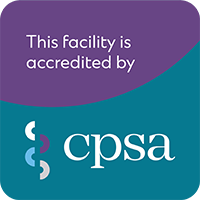This is a current hot topic within our clinic – what to do for patients reporting regional neck pain
without referral or radiating or nerve-related symptoms that don’t respond to conservative care?
Essentially, the interventional lines fall alongside discipline experience. One group of
professionals are attached to the inflammatory nature of pain, and the need to hit it on the head
with steroid, and the other side recognize that possible short-term benefits of corticosteroid are
not sustainable without risk when repeated and defer to other longer-term options. Now, as a
physiotherapist without the ability to inject, I tread a fine line here. But rather than pick sides,
what does the evidence say? Although not an extensive search (this is a blog after all), pubmed
revealed 10 articles responding to the search terms (1) cervical spine, (2) corticosteroid injection
and (3) intraarticular. Notably this search recovered one guideline, three systematic reviews,
two narrative reviews, two observational studies and two randomized controlled trials (RCTs).
After reading the guideline and review articles, another RCT and five uncontrolled observational
studies were recovered. I was also aware of one further guideline summarizing the literature on
cervical spine interventions.
So, what does all this information tell us? Surprisingly only 3 RCTs have been performed, and
only one has methodologically rigorous criteria where we can be confident of the findings.
Performed back in 1994 when ‘The Sign’ by Ace of Base was heard on all the airwaves,
Barnsley and colleagues investigated 41 people following whiplash injury who were randomized
to an injection of local anaesthetic (bupivacaine) or a corticosteroid (betamethasone) (1) . Pain
returned within 3 days in those receiving the corticosteroid, and within 3.5 days for those
receiving the local anaesthetic, demonstrating that intraarticular injection of corticosteroid is not
effective for neck pain relief following whiplash injury. Another larger RCT involving 400 patients
with myofascial neck pain demonstrated more positive results with the addition of one
corticosteroid injection to a multimodal treatment program (2) . However, people with whiplash
injuries were excluded from this study, making study comparisons challenging. Co-treatment
involving Botox and trigger point injections also prevent firm conclusions being drawn as to the
exact influence of the steroid injection. In 2017, a small study investigated intra-articular steroid
injection against pulsed radiofrequency stimulation within the cervical facet joint space for
patients with spontaneous onset of chronic neck pain (head and neck trauma patients were
excluded) (3) . For those receiving steroid injections, 60% (n= 12) continued to report significant
improvement (≥ 50% pain relief) 6-months later. The lack of a control group prevents
conclusions being drawn on the true benefit of corticosteroid injections for cervical facet joint
pain in this study.
That leaves us with six observational studies of various methodological rigour, especially in
regard to sample numbers and variable follow-up time periods, that I will defer on commenting
on. Thus, the current evidence would appear weak for the utility of cervical facet joint steroid
injections, which is exactly the same as the conclusion made by a group of people a lot smarter
than me. The American Society of Interventional Pain Physicians reported that the level of
evidence was V (out of V) with weak strength of recommendation for cervical intraarticular facet
joint injections (4) . The majority showed lack of effectiveness, whereas one study with 6-month
follow-up, showed lack of long-term improvement.
More importantly, context is everything. Use of corticosteroids may lead to adverse systemic
effects, including problems with bone density, possible infection, increased blood sugars,
Cushing syndrome, and stress system dysfunction (5).
Given that a diagnostic standard for facet-mediated pain exists in the form of medial branch
blocks (6) , and given that a positive response to these blocks predicts successful response to a
validated treatment – that being radiofrequency ablation (7) – for a period of approximately 7-14
months, and this can be repeated, then the use of intra-articular corticosteroids appears to be a
poor choice for management of neck pain of facet joint origin.
And for those not liking the thought of ‘burning nerves’, or if radiofrequency ablation is not
medically indicated, then emerging therapies, such as orthobiologics are demonstrating promise
(8) . That can be the topic of another blog entry!
References:
- L. Barnsley, S. M. Lord, B. J. Wallis, N. Bogduk, Lack of effect of intraarticular
corticosteroids for chronic pain in the cervical zygapophyseal joints. N Engl J Med 330,
1047-1050 (1994). - S. C. Park, K. H. Kim, Effect of adding cervical facet joint injections in a multimodal
treatment program for long-standing cervical myofascial pain syndrome with referral pain
patterns of cervical facet joint syndrome. J Anesth 26, 738-745 (2012). - J. W. Lim, Y. W. Cho, D. G. Lee, M. C. Chang, Comparison of Intraarticular Pulsed
Radiofrequency and Intraarticular Corticosteroid Injection for Management of Cervical
Facet Joint Pain. Pain Physician 20, E961-E967 (2017). - L. Manchikanti et al., Comprehensive Evidence-Based Guidelines for Facet Joint
Interventions in the Management of Chronic Spinal Pain: American Society of
Interventional Pain Physicians (ASIPP) Guidelines Facet Joint Interventions 2020
Guidelines. Pain Physician 23, S1-S127 (2020). - A. Stout, J. Friedly, C. J. Standaert, Systemic Absorption and Side Effects of Locally
Injected Glucocorticoids. PM R 11, 409-419 (2019). - L. Barnsley, N. Bogduk, Medial branch blocks are specific for the diagnosis of cervical
zygapophyseal joint pain. Reg Anesth 18, 343-350 (1993). - S. M. Lord, L. Barnsley, B. J. Wallis, G. J. McDonald, N. Bogduk, Percutaneous radio-
frequency neurotomy for chronic cervical zygapophyseal-joint pain. N Engl J Med 335,
1721-1726 (1996). - A. Smith, B. Andruski, G. Deng, R. Burnham, Cervical facet joint platelet-rich plasma in
people with chronic whiplash-associated disorders: A prospective case series of longer
term 6- and 12-month outcomes. Interventional Pain Medicine 2, (2023).





